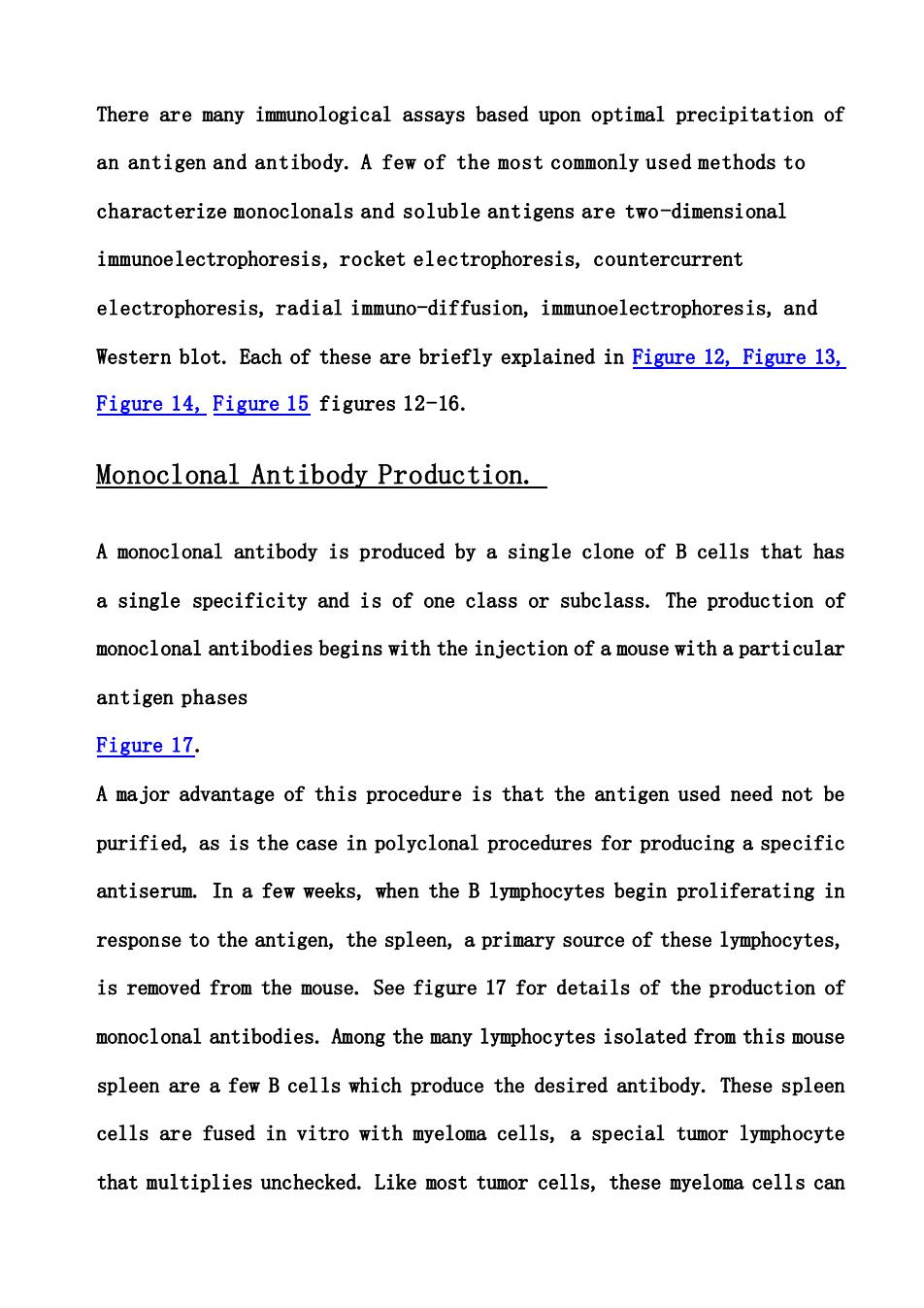正在加载图片...

There are many immunological assays based upon optimal precipitation of an antigen and antibody.A few of the most commonly used methods to characterize monoclonals and soluble antigens are two-dimensional immunoelectrophoresis,rocket electrophoresis,countercurrent electrophoresis,radial immuno-diffusion,immunoelectrophoresis,and Western blot.Each of these are briefly explained in Figure 12,Figure 13, Figure 14,Figure 15 figures 12-16. Monoclonal Antibody Production. A monoclonal antibody is produced by a single clone of B cells that has a single specificity and is of one class or subclass.The production of monoclonal antibodies begins with the injection of a mouse with a particular antigen phases Figure 17. A major advantage of this procedure is that the antigen used need not be purified,as is the case in polyclonal procedures for producing a specific antiserum.In a few weeks,when the B lymphocytes begin proliferating in response to the antigen,the spleen,a primary source of these lymphocytes, is removed from the mouse.See figure 17 for details of the production of monoclonal antibodies.Among the many lymphocytes isolated from this mouse spleen are a few B cells which produce the desired antibody.These spleen cells are fused in vitro with myeloma cells,a special tumor lymphocyte that multiplies unchecked.Like most tumor cells,these myeloma cells can There are many immunological assays based upon optimal precipitation of an antigen and antibody. A few of the most commonly used methods to characterize monoclonals and soluble antigens are two-dimensional immunoelectrophoresis, rocket electrophoresis, countercurrent electrophoresis, radial immuno-diffusion, immunoelectrophoresis, and Western blot. Each of these are briefly explained in Figure 12, Figure 13, Figure 14, Figure 15 figures 12-16. Monoclonal Antibody Production. A monoclonal antibody is produced by a single clone of B cells that has a single specificity and is of one class or subclass. The production of monoclonal antibodies begins with the injection of a mouse with a particular antigen phases Figure 17. A major advantage of this procedure is that the antigen used need not be purified, as is the case in polyclonal procedures for producing a specific antiserum. In a few weeks, when the B lymphocytes begin proliferating in response to the antigen, the spleen, a primary source of these lymphocytes, is removed from the mouse. See figure 17 for details of the production of monoclonal antibodies. Among the many lymphocytes isolated from this mouse spleen are a few B cells which produce the desired antibody. These spleen cells are fused in vitro with myeloma cells, a special tumor lymphocyte that multiplies unchecked. Like most tumor cells, these myeloma cells can